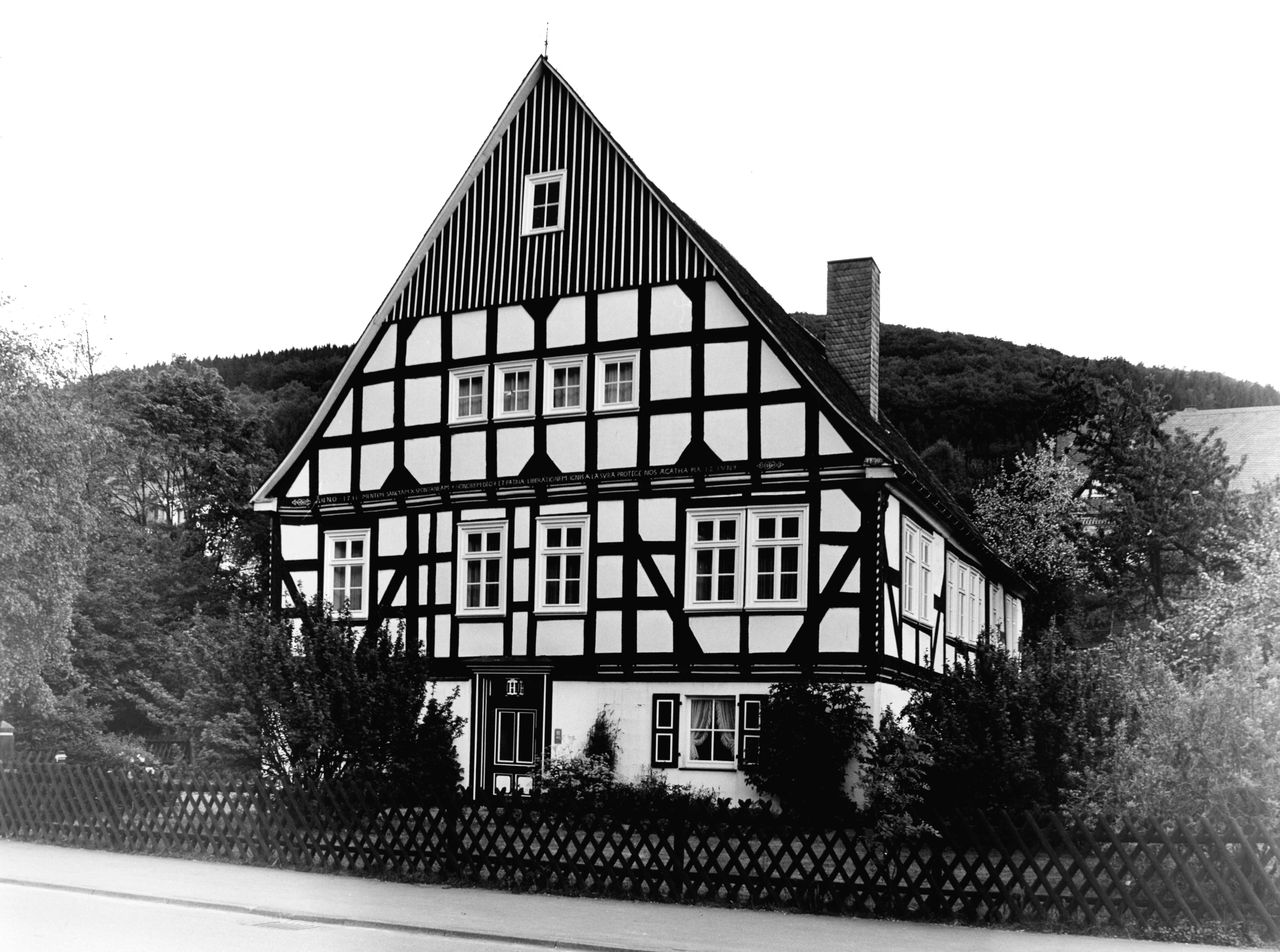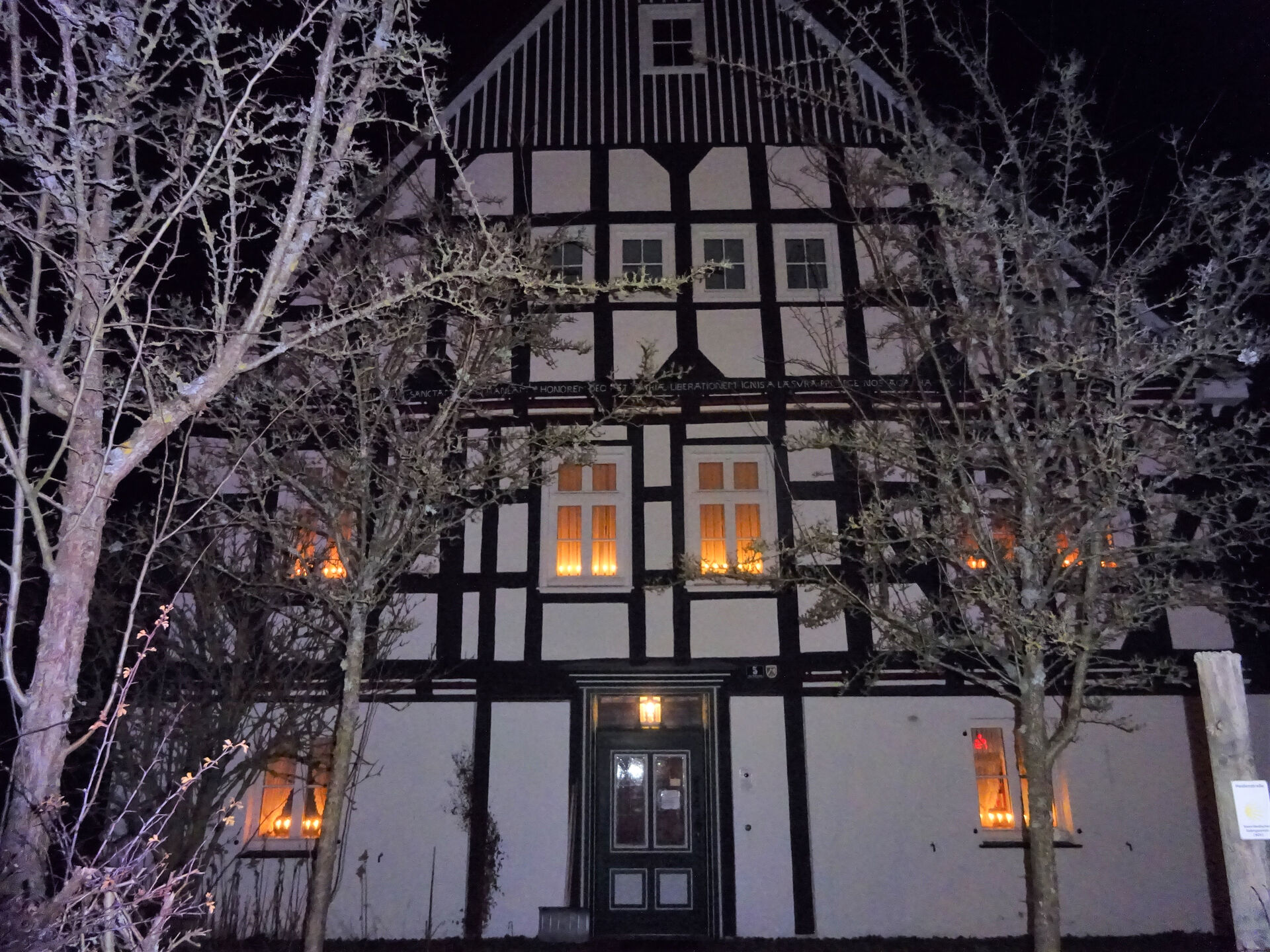Rectory in Oberkirchen
The most beautiful pastorate in the area
If you want to be seen often, stand at a Hauptstraße. Perhaps the builders in the 11th century thought along similar lines when they built a church directly on the so-called Heidenstraße. This trade and military route was a much-traveled route. The vicarage felt the effects of this: during the Thirty Years' War of 1618-48, troops and marauding hordes passed by, making the vicarage practically uninhabitable. After economic recovery and a few repairs, a new one was finally built: Opposite the church, a typical Sauerland half-timbered building was erected in 1711, which is now the oldest residential building in Oberkirchen today.
The nobles were responsible for maintaining the church, while the inhabitants of the parish were responsible for the pastor's house: this was the rule in the 17th century. So after the 30 Years' War, the peasantry were expected to pay for a new vicarage. However, the farming families were also war-torn, so it took a while before the new building was completed. Finally, in 1711, the time had come and the then vicar Braun complained that he had had to pay for the necessary new building mainly out of his own pocket. Parts of the old house brought in some income; they were sold for 20 Reichstaler.
According to the documentation, however, a lot of money had gone into the previous building - a last attempt to save it? The roof and windows were repaired before the demolition. Perhaps the old vicarage was partly moved to another location. This was a sustainable method when people wanted to save money when building a house, but it is not documented.
The Oberkirchen vicarage is a Sauerland Baroque building dating from 1711. "More beautiful than the other vicarages in the area", according to a report shortly after it was built. The typical half-timbering of tar-soaked black oak beams stands on a solid plinth. The shape is presumably based on the previous building, a "distinctly farmhouse" probably built with longitudinal planks. The design of the south-facing gable points to this origin. The group of four windows, which was only added in the 1960s, is striking. In the 1930s, the south gable was still completely boarded up. The deaf bands on the corner posts are very original, without the top and bottom finishes that were common later. While the eaves side facing east has ten window axes, the west side facing the weather has no windows and, like the gabled roof, is covered with slate. The rectory had a thatched roof until well into the 19th century.
The vicarage is the residential building of a former vicarage, which was designed for rural self-sufficiency, as the income from the church was not enough for the vicar to live on. As all expenses were documented, we have a fairly accurate picture of the past. The priests could not manage the farm alone, they needed staff. There was, for example, the Domestik, after whom a parlor was named. In 1685, "a cook, a maid, a cowgirl and a horse boy lived on the vicarage." This indicates animals in addition to sheep and pigs. It was not until the middle of the 19th century that the parish salary was changed; farming was no longer necessary.
The house itself has rooms for guests and the congregation: There is an office and a meeting room. A historic table with the inscription AB 1673, which belonged to the priest Bergenthal and is now used as a public altar, commemorates a former occupant of the vicarage.
Vertelleken
Chatting out of the sewing box...
Records and memories show how different the possibilities of a priest were over the course of time. Pastor Braun, the builder of today's house, complained that the local farmers did not want to reimburse him for the building costs, even though this was customary. In 1842, however, Mayor Röper wrote that maintenance and new construction were the responsibility of the inhabitants of the parish: "As it has never happened otherwise."
The conversions over the centuries are documented down to the individual nail. The farm with its fields and woods, barns, warehouses and stables gradually declined because it was no longer economically necessary. At the end of the 20th century, Pastor Schwenke only rode out for pleasure and founded the local riding club. When people came looking for him, the neighbors are said to have told them to have a look at the riding arena. Because of his short church services, he was generally known as "Pastor Hurtig".





